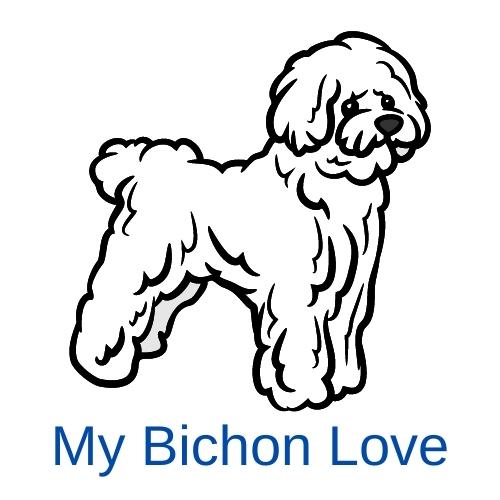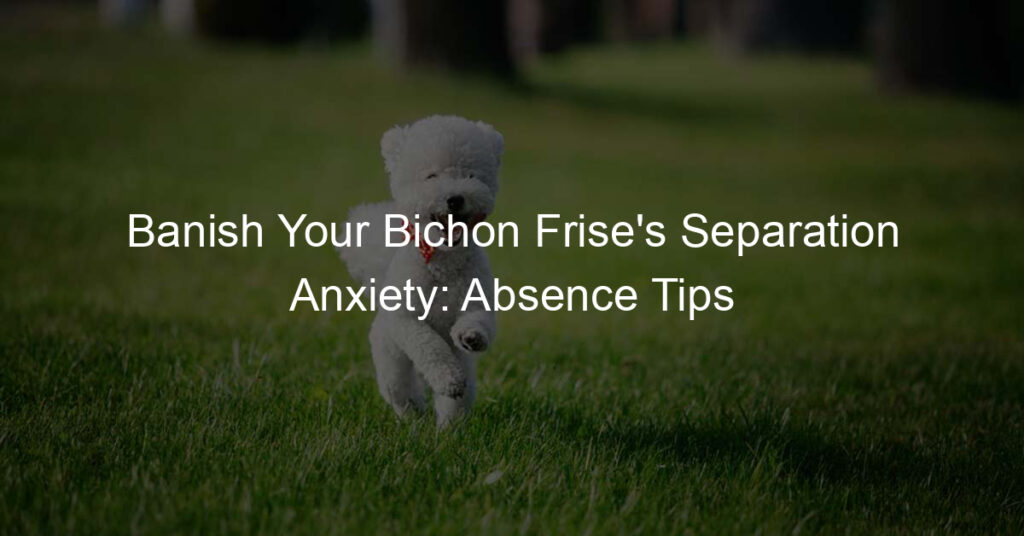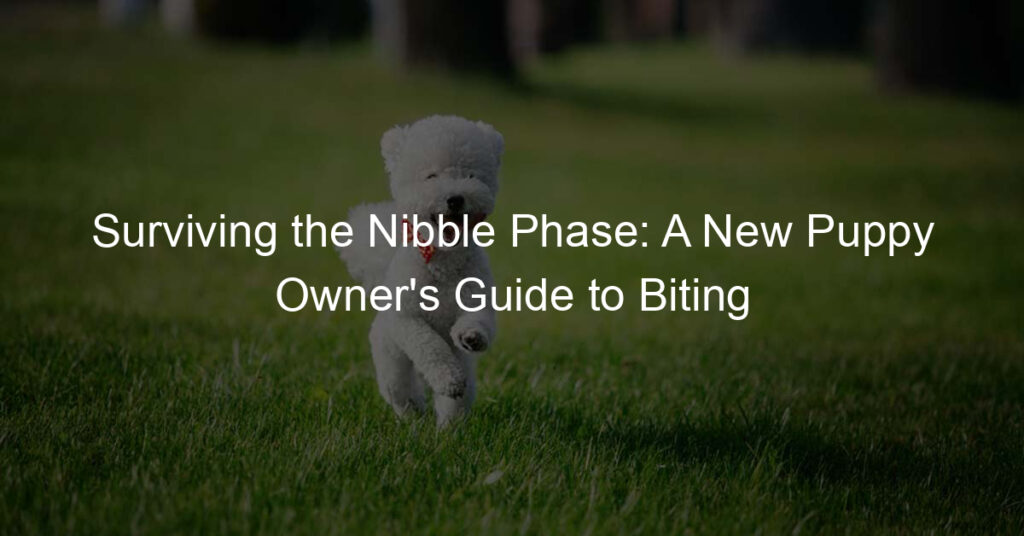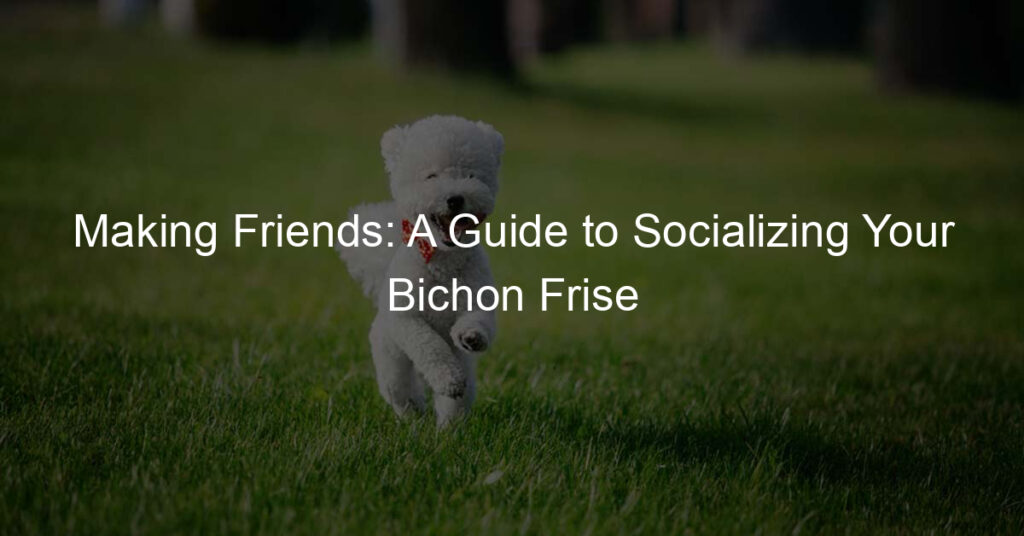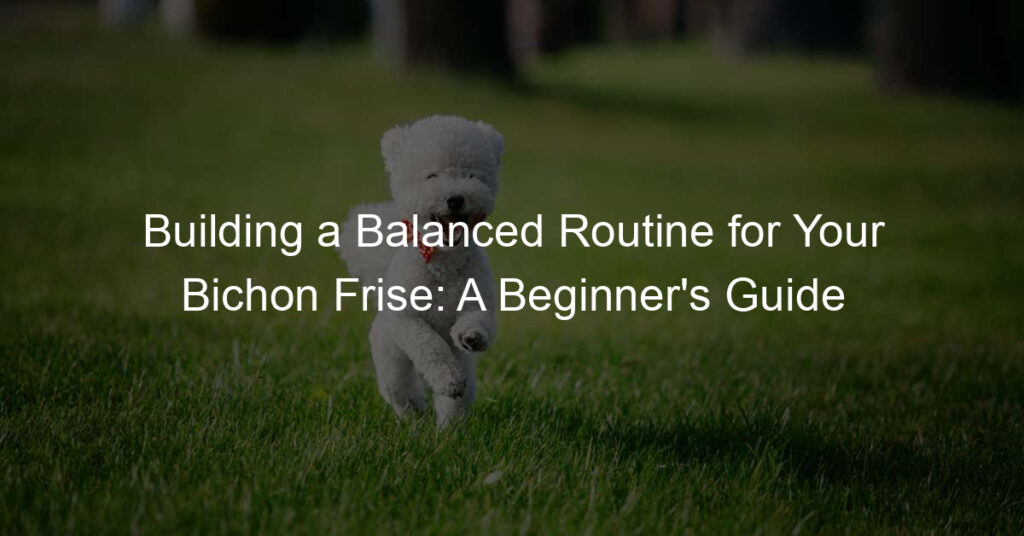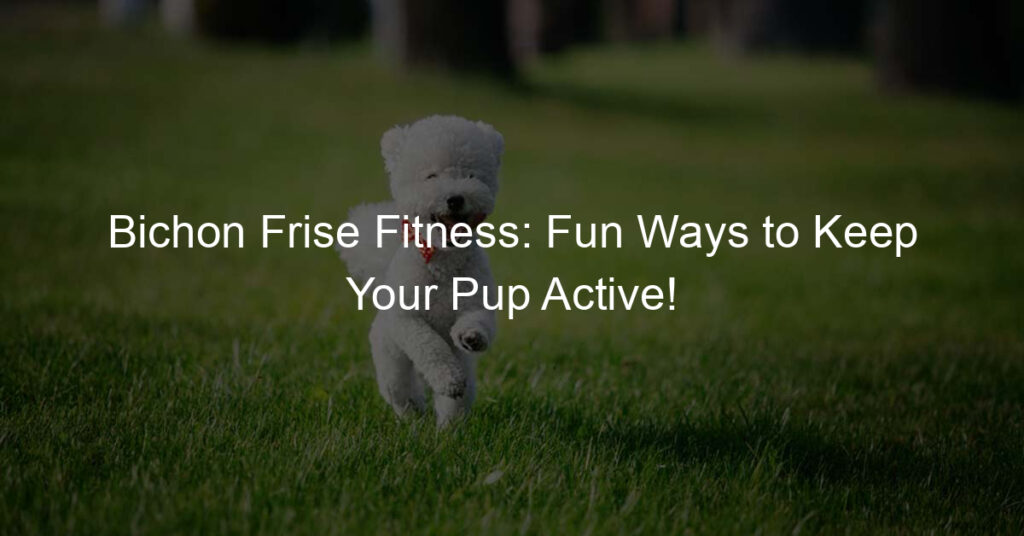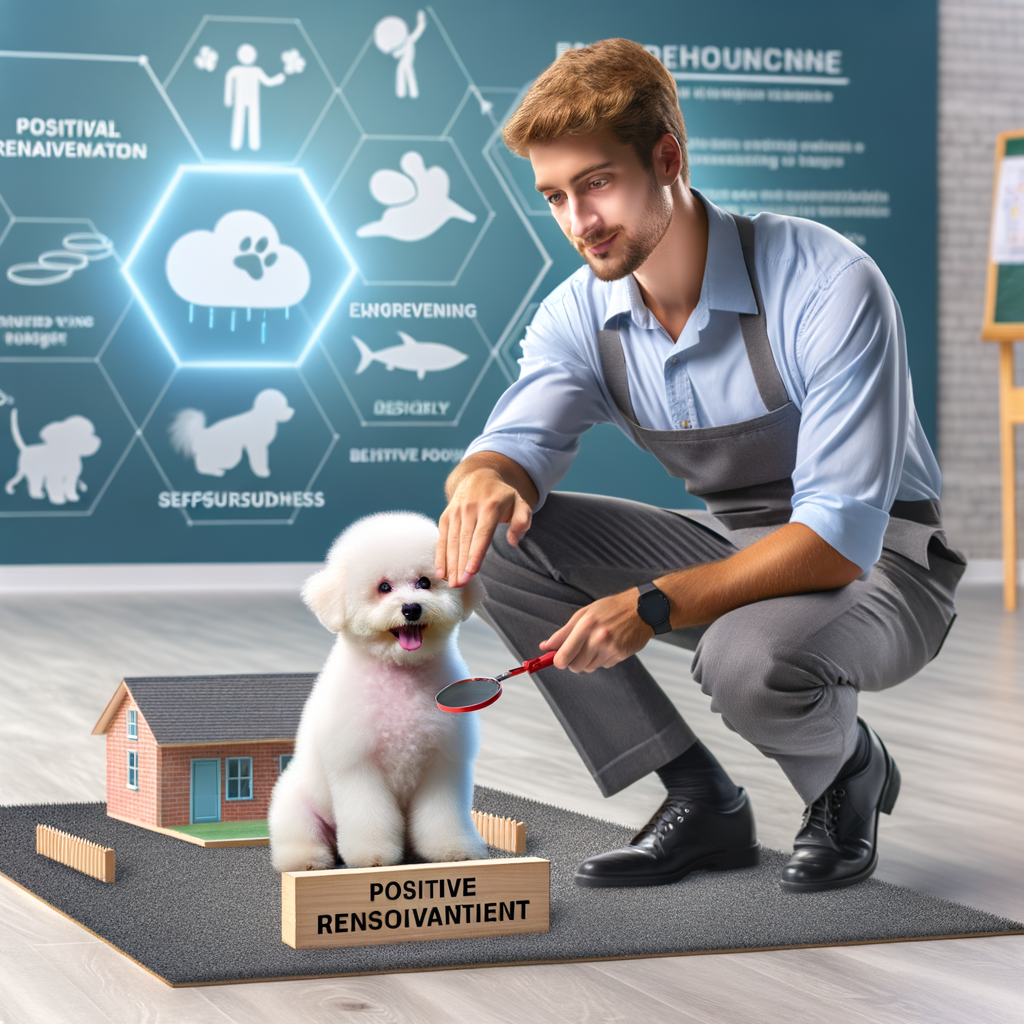
Introduction to Bichon Frise Training
Training your Bichon Frise is an essential part of owning this delightful breed. Not only does it help in developing a strong bond between you and your pet, but it also ensures that your Bichon Frise grows into a well-behaved and confident adult dog. This section will help you understand the unique behavior of Bichon Frise and the importance of training them as puppies.
- Understanding Bichon Frise Behavior
- Importance of Training Bichon Frise Puppies
Bichon Frises are known for their friendly and cheerful disposition. They are highly sociable dogs that love to be around people and other animals. However, they can also be stubborn at times, which can make training a bit challenging. Understanding their behavior is key to successful training. Bichon Frises are intelligent and quick learners, but they also have a playful side that can sometimes distract them from their training. Patience and consistency are crucial when training this breed.
Training should start while your Bichon Frise is still a puppy. This is because puppies are more receptive to learning new things. Training your Bichon Frise puppy can help prevent behavioral issues in the future. It can also help your puppy grow into a confident and well-adjusted adult dog. Training should include basic commands like sit, stay, and come, as well as socialization with other dogs and people. Remember, a well-trained Bichon Frise is a happy and confident Bichon Frise.
Training your Bichon Frise requires time, patience, and understanding. But the rewards of having a well-behaved and confident dog are well worth the effort. In the following sections, we will delve deeper into the techniques and strategies for successful Bichon Frise training.
Positive Reinforcement for Dogs: An Overview
Training your dog can be a rewarding experience, especially when you use positive reinforcement methods. This approach focuses on rewarding good behavior, rather than punishing bad behavior. Let’s delve into the world of positive dog training and explore its benefits.
- Definition of Positive Dog Training
- Benefits of Positive Reinforcement for Dogs
- Builds Trust: Positive reinforcement helps build a strong bond of trust between you and your dog. When your dog associates you with good things, they’re more likely to listen to you.
- Improves Behavior: Rewarding good behavior encourages your dog to repeat it. Over time, this can lead to significant improvements in your dog’s behavior.
- Boosts Confidence: Positive reinforcement can also boost your dog’s confidence, making them more eager to learn and try new things.
- Creates a Happy Environment: Lastly, positive reinforcement creates a happy and stress-free environment for your dog, which is beneficial for their overall well-being.
Positive dog training, also known as reward-based training, is a method that uses positive reinforcement to encourage good behavior. This means that when your dog behaves well or performs a desired action, you reward them. The reward could be a treat, a toy, or even just a pat on the head. The idea is to make the dog associate good behavior with positive outcomes, encouraging them to repeat the behavior in the future.
There are numerous benefits to using positive reinforcement for training your dog. Here are a few:
In conclusion, positive reinforcement is a powerful tool for dog training. It not only helps improve your dog’s behavior but also strengthens your bond with them. So, why not give it a try?
Building Confidence in Dogs: Why it Matters
Building confidence in dogs, particularly in Bichon Frise, is an essential aspect of their overall well-being and behavior. A confident dog is a happy dog, and a happy dog makes for a happy home. Let’s delve into why this matters and how you can recognize a confident dog.
- Importance of Confidence in Bichon Frise
- Signs of a Confident Dog
- A confident dog holds its tail high and wagging, not tucked between its legs.
- Confident dogs have a relaxed body posture, not crouched or showing signs of tension.
- They maintain eye contact without showing signs of aggression.
- Confident dogs are curious and willing to explore their surroundings.
- They are comfortable with social interactions, not shying away from other dogs or people.
The Bichon Frise is a small breed known for its cheerful disposition and playful nature. However, like any other breed, they can also experience fear and anxiety, which can lead to behavioral issues. Building confidence in your Bichon Frise is crucial for several reasons.
Firstly, a confident dog is less likely to develop fear-based behaviors such as aggression or excessive barking. Secondly, confidence helps your Bichon Frise to be more sociable and comfortable around other dogs and people. Lastly, a confident dog is more likely to be responsive to training, making the process more enjoyable and successful for both of you.
Recognizing a confident dog is the first step towards fostering this trait in your pet. Here are some signs to look out for:
Remember, confidence doesn’t develop overnight. It’s a gradual process that requires patience, consistency, and positive reinforcement. As you work on building your Bichon Frise’s confidence, celebrate small victories and continue to provide a safe, loving environment for your pet.
Mastering Positive Reinforcement: Step-by-Step Guide
Positive reinforcement is a powerful tool in dog training. It involves rewarding good behavior, which encourages the dog to repeat it. This method is effective and builds a strong bond between you and your Bichon Frise. Let’s break down the process into understandable steps.
- Understanding the Basics of Positive Reinforcement
- Implementing Positive Reinforcement in Training
- Choose a behavior: Decide on the behavior you want to reinforce. This could be anything from sitting to not jumping on guests.
- Choose a reward: Pick a reward that your dog loves. This could be a favorite treat, a toy, or praise. Remember, the reward should be something your dog really wants.
- Give the command: Clearly and calmly give the command for the behavior you want.
- Reward the behavior: As soon as your dog performs the behavior, give them the reward. This immediate reinforcement helps your dog make the connection between the behavior and the reward.
- Common Mistakes to Avoid
- Delaying the reward: The reward should be given immediately after the behavior. If you wait too long, your dog may not make the connection between the behavior and the reward.
- Not being consistent: Consistency is key in dog training. Make sure to reward the behavior every time it happens, especially in the early stages of training.
- Using negative reinforcement: Negative reinforcement, like scolding or punishment, can confuse your dog and make training more difficult. Stick to positive reinforcement for the best results.
Positive reinforcement is all about rewarding good behavior. When your dog behaves in a way you like, you give them a reward. This could be a treat, a toy, or even just praise. The idea is to make the dog associate the good behavior with the reward, making them more likely to repeat the behavior in the future.
For example, if your Bichon Frise sits when you tell them to, you might give them a treat. Over time, your dog will learn that sitting when told equals getting a treat, and they’ll be more likely to do it.
Now that you understand the basics, let’s talk about how to use positive reinforcement in training. Here are some steps to follow:
While positive reinforcement is a powerful tool, it’s important to avoid some common mistakes. Here are a few to watch out for:
Mastering positive reinforcement takes time and patience, but the results are well worth it. With this method, you can build a strong, positive relationship with your Bichon Frise and help them become a well-behaved member of your family.
Bichon Frise Confidence: Case Studies
In this section, we will explore two case studies that highlight the effectiveness of confidence-building techniques in Bichon Frise dogs. These real-world examples will provide a clear understanding of how these methods work and the positive outcomes they can yield.
-
Case Study 1: Building Confidence in a Timid Bichon Frise
Meet Bella, a two-year-old Bichon Frise who was extremely timid and fearful. Her owners noticed that she was often anxious and hesitant to engage with other dogs or people. They decided to implement confidence-building techniques to help Bella overcome her fears.
They started with small steps, such as introducing Bella to new environments and experiences in a controlled and calm manner. They also used positive reinforcement, rewarding Bella with treats and praise whenever she showed signs of confidence. Over time, Bella began to show significant improvements. She became more outgoing and less fearful, demonstrating the power of confidence-building techniques.
-
Case Study 2: Success with Positive Reinforcement
Next, we have Max, a Bichon Frise puppy who was initially stubborn and resistant to training. His owners decided to use positive reinforcement to encourage good behavior and obedience.
They rewarded Max with treats and praise every time he followed a command correctly. They also made sure to keep training sessions short and fun to maintain Max’s interest. Over time, Max became more obedient and responsive to commands. His owners were thrilled with the results, proving that positive reinforcement is an effective training method for Bichon Frise dogs.
These case studies highlight the effectiveness of confidence-building techniques and positive reinforcement in training Bichon Frise dogs. By using these methods, owners can help their dogs become more confident, obedient, and well-behaved.
Additional Dog Training Techniques
After mastering the basics of positive reinforcement, you might be interested in exploring some additional dog training techniques. These methods can further enhance your Bichon Frise’s confidence and obedience. Let’s dive into two popular techniques: Clicker Training and Leash Training.
-
Clicker Training
Clicker training is a simple and effective method of dog training. It involves using a small device that makes a distinct ‘click’ sound. When your dog performs a desired behavior, you immediately ‘click’ and reward them with a treat. This method helps your dog understand exactly what action earned them the reward.
For example, if you’re teaching your Bichon Frise to sit, you would ‘click’ the moment their bottom touches the ground, then immediately give them a treat. With consistent practice, your dog will associate the ‘click’ with doing something good and earning a reward. This technique can be used to teach new commands, correct unwanted behaviors, and even train complex tricks.
-
Leash Training
Leash training is crucial for all dogs, including Bichon Frises. It ensures that your dog behaves well and stays safe during walks. The goal of leash training is to teach your dog to walk politely on a loose leash without pulling, lagging, or zigzagging.
Start by allowing your Bichon Frise to get used to wearing a collar and leash. Then, practice walking in a quiet, distraction-free area. If your dog pulls on the leash, stop walking. Only continue when they stop pulling and the leash is loose. Reward your dog for walking nicely by your side. Remember, patience and consistency are key in leash training.
Both clicker and leash training can significantly improve your dog’s behavior and your bond with them. Remember, all dogs learn at their own pace, so be patient and consistent in your training. Happy training!
Confidence Building Techniques for Bichon Frise: Key Takeaways
Training a Bichon Frise requires a unique approach, as these dogs are known for their lively spirit and playful nature. Here are the key takeaways from our discussion on confidence building techniques for your Bichon Frise:
- Importance of Consistency
- Patience is Key
- Always End on a Positive Note
Consistency is the cornerstone of any successful training program. For a Bichon Frise, this means maintaining a regular schedule and sticking to the same commands and gestures. This helps your dog understand what is expected of them, boosting their confidence and making training sessions more productive.
Training a Bichon Frise requires a lot of patience. These dogs are intelligent, but they can also be stubborn. It’s important not to rush the process. Remember, confidence building is not a race but a journey. Celebrate small victories and keep your expectations realistic.
Ending each training session on a positive note is crucial for building your Bichon Frise’s confidence. This could mean ending with a command your dog has mastered, or simply giving them a treat and some praise. This helps your dog associate training with positive experiences, making them more likely to engage in future sessions.
In conclusion, training a Bichon Frise requires consistency, patience, and a positive approach. By following these key takeaways, you can help build your dog’s confidence and make training a more enjoyable experience for both of you.
Conclusion: Bichon Frise Positive Reinforcement
As we wrap up this comprehensive guide on Bichon Frise training, it’s important to remember the key points we’ve discussed. Let’s take a moment to recap and reflect on the importance of positive reinforcement and confidence building in dogs.
- Recap of Positive Dog Training Techniques
- Final Thoughts on Building Confidence in Dogs
Throughout this post, we’ve emphasized the importance of positive reinforcement in dog training. This method, which involves rewarding good behavior and ignoring unwanted behavior, has been proven to be highly effective, especially for Bichon Frises. We’ve discussed various techniques such as using treats, toys, and praises as rewards, and the importance of consistency and timing in the training process.
Remember, the goal is to make your Bichon Frise associate good behavior with positive outcomes, thus encouraging them to repeat the behavior. This approach not only makes training more enjoyable for your dog but also strengthens your bond with them.
Building confidence in your Bichon Frise is just as crucial as teaching them basic commands. A confident dog is a happy, well-adjusted, and well-behaved dog. We’ve shared various techniques to boost your dog’s confidence, such as socialization, exposure to new environments and experiences, and giving them tasks to accomplish.
Remember, confidence-building is a gradual process. It requires patience, consistency, and a lot of love and support. With time, you’ll see a significant improvement in your Bichon Frise’s confidence and overall behavior.
In conclusion, training your Bichon Frise using positive reinforcement techniques and building their confidence can make a world of difference in their behavior and your relationship with them. It’s a rewarding journey that requires patience and consistency, but the end result—a happy, confident, and well-behaved Bichon Frise—is well worth the effort.
